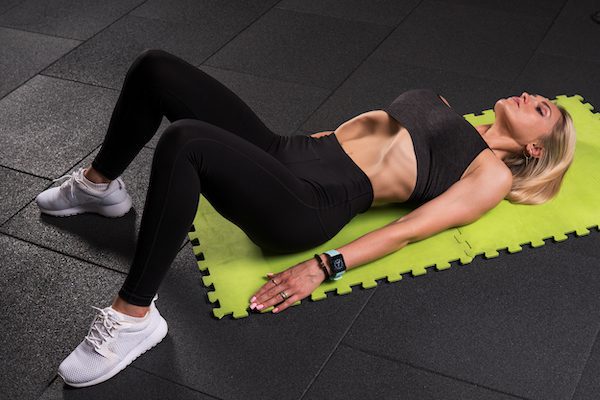Many of today’s fitness fanatics are looking for new ways to get in shape. The vacuum exercise is a great way to target the muscles in your abs, hips, lower back, and glutes. It can also help you improve your flexibility by stretching these areas out. Don’t worry about doing this wrong or injuring yourself – here are some tips on doing it safely!
The vacuum exercise is an exercise that aims to burn fat around your inner ab muscles, including the transverse abdominis muscle. It is a breathing exercise that involves the contraction of internal abdominal muscles. Including this technique in your abs regime will aid you in burning stomach fat in as little as three weeks.

The stomach vacuum exercise is straightforward to perform if you want to cut down your waist size and create a tight middle section. We aim to build the ab muscle to improve our postural strength to pull our internal organs in. This helps to give you a slim waistline and abs, which are better looking. Also, the stomach vacuum exercise is excellent for improving your body’s core strength.
Steps to Perform
There are some steps related to this exercise that you can follow:
- First, roll on your back
- Keep your knees in a bending position, having your feet flat on the floor
- Inhale slowly and deeply. Then, start exhaling with as much force as possible while bringing in your tummy. Hold on pause for around 20 seconds.
- When you are holding this position, try taking normal breaths
- Do some inhalation, and then bring your tummy back to the initial position.
- Repeat the exercise around five times at least.
This is how you will do one complete round of vacuum exercises.
Muscles It Works
Our body has an innermost abdominal muscle, the transverse abdominis muscle. This muscle undergoes contraction as you do the vacuum exercise. Also, it impacts the diaphragm, which helps you lose body weight faster, especially around the belly. Therefore, repeatedly doing this exercise might help build endurance and strength.
With time, you see that this exercise helps tone your ab muscles and provides you with better core stability. As you can see, these muscles are essential for improving core strength in the body.
Your bladder support also increases this way. The abdomen, lower back, and pelvic floor muscles comprise the core muscles. They also act like hammock strings to aid the nearby structures present in the pelvic region of your body. These body muscles also function to cut down the overall flow of your urine from the bladder. They also help in supporting the intestines and the bladder. Therefore, you have a more robust pelvic floor. This allows you to control your urine flow, which passes through your bladder.
Physical Skill It Improves
With time, you see that this exercise helps you with your breathing. This is typically important for exercises where your respiratory rate must be controlled. Therefore, swimmers can take pretty enormous advantage of this exercise. This is because controlling your breath and doing rhythmic breathing helps you swim in water for a considerable time.
Also, it increases your lung capacity. Resultantly, you can hold your breath for a long time, and you don’t have to get out of the water now and then. However, making this exercise a critical part of your everyday routine is essential. Also, it is vital to notice how you will improve your regular breathing. Remember, this exercise is beneficial if you are ready to implement proper breathing in your daily life. Therefore, shallow breathing is not suitable for this purpose.
You work your core and pelvic region in your body using this exercise. This helps you to sustain your balance and improve your overall body stability as you exercise. Also, it allows you to have better bladder control. This is especially important in aging people or people who just had a relevant surgery on the bladder in the past. In addition, cases of kidney stones can consider in this exercise. Also, this exercise helps improve the overall balance of the body.
Incorrect Ways to Perform
It is not practical to make your back curve in a thoracic spine. Therefore, when doing the vacuum exercise, don’t concentrate on fixing your ab area.
Also, it is quite a widespread mistake people make when they consume an enormous amount of food before doing it. The best time to do vacuum exercise is in the morning when you are an empty stomach. This is the time when catabolic processes in your body prevail. Therefore, the normal breakdown of fat is rising, and you lose more fat in this way.
Also, the regularity of you doing exertion is ideal. However, it would help if you didn’t take it to an extreme level. Do not continue this exercise if you feel discomfort. Mainly, expect this discomfort in the intestine and stomach. On the other hand, you might also feel some tightness or strain in your ab muscles. Pregnant and menstruating women should not perform this activity. This is because it calls for excessive usage of the muscles, which may cause pain. Consequently, women undergoing menstruation or gestation may experience a lot of discomforts.
Pushing it too hard, inhaling or exhaling shallow or too fast, and going for heavier movements are common mistakes. Some people do sharp breathing during this exercise. This is not advisable. You need to make sure that you breathe using your whole breath. However, take it smoothly and in an excellent calculative way. Not doing this will cause abrupt movements, which are not helpful for you. This will also hinder your process of burning your fat from the body.
Modifications to Exercise
Some variations of this exercise are:
1. Supine Vacuum
You need to lie in a supine position, and you need to flex your hips. Next, bend your knees with your feet lying flat on the floor.
You need first to exhale the air from your body slowly. It will raise the diaphragm and then enable you to contract your inner ab muscle. It will be easier for you to do this on an empty stomach.
You need to pull your navel close to your spine and feel the suction as you pull your belly towards your spine. As you draw in your navel, you will contract your ab muscle more.
2. Quadruped Vacuum Exercise
Work against gravity to do this exercise variation.
You first need to start in your position as you face the floor with your four limbs touching the ground. Next, your shoulders need to be vertical over your arms. Next, your wrists need to be over your knees.
You need to execute in the same way you would if you were in a supine position. First, exhale slowly, and then pull your navel towards the spine. Moreover, you can try going for another variation if you are comfortable doing this for around a minute or more.
3. Rectus Abdominis and Transverse Abdominis Co-Contraction
You can also coordinate both Rectus Abdominis and Transverse Abdominis muscles to add up the functional efficiency of this exercise. Also, you can do the pull-down crunch for that order. For example, do the stomach vacuum exercise, and then you would need to do a crunch-type activity to flex your spine. So in that regard, a pull-down crunch can be an ideal choice.
Sit in a cable pull-down station in your setting and hold the bar over your head as if you want to do pulldowns. You can do it at your home and take the aid of a resistance band for that order.
Inhale deeply and make your belly go inwards as much as you can. Next, push your abs towards your spine. Then, you need to blow the air out while crunching down. These are ideal for gaining control of the ab muscles and for people who have distension in their abdominal wall.
4. Sitting Position Stomach Vacuum Exercise
The conventional stomach vacuum exercise might get more challenging for some when we consider gravity. However, this variation is a better option for people who cannot do the quadruped vacuum exercise. Do the exercise according to the following steps.
- Sit straight on a stable surface and don’t lean against a support
- Exhale as well as pull your navel towards your spine
- Work up to like three sets of vacuums that go for a minute each. You can perform these vacuums on an uneven surface to increase the efficiency of the exercise.
5. Functional Stomach Vacuum Exercise
This stomach vacuum exercise helps to regulate your use of transverse abdominal muscle in your daily life. But, first, you must make sure that you pull your navel inward when sitting throughout the day.
The fundamental difference here will be that you hold lightly and contract your ab muscles indefinitely. Try to breathe as long as the movement goes. You need to get highly conscious of your transverse abdominis muscle and don’t enable it to relax as you sit. This is one major thing people do. Be sure to lightly contract your transverse abdominis muscle as you stand. It will come naturally, and you will feel much better doing it.
The last word on the vacuum exercise
According to research, the stomach vacuum exercise helps to strengthen your deep core and oblique muscles. Draw in your stomach, which helps to improve your overall lower back stability. Also, you can use this exercise to stabilize your hips, spine, and core. Do this regularly to see faster results.
If you’re looking for a new workout routine that will help tone your muscles, this might be a perfect choice! We recommend doing these exercises consistently to build up endurance and strength. Have you tried it out yet? Let us know what you think – has it helped achieve better core stability?




